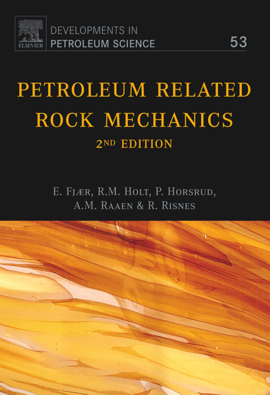裂缝性地层井漏溢流转换时间研究




本研究基于一维径向裂缝中钻井液的流动模型,建立了一个新的模型,旨在研究裂缝储层中多压力系统井漏溢流转换时间的影响因素。并通过求解数学模型,得出了计算井漏溢流转换时间的方程。通过再现四川油田的现场数据和参考文献的模拟结果,对模型进行了验证。并分析了稠度系数、流性指数、动态剪切力、钻井液密度、钻井液侵入深度、漏失层压力、裂缝宽度、环空液面下降高度、高压层压力等因素的影响。结果表明,随着稠度系数、流性指数、动态剪切力、钻井液密度、钻井液侵入深度、漏失层压力的增加,井漏溢流转换时间随之增加。而随着裂缝宽度增加、环空液面高度下降及高压层压力增加,井漏溢流转换时间会缩短。“吊灌”作业的时间间隔应适当小于井漏溢流转换时间。在保证井筒安全的前提下,适当提高钻井液的稠度系数、流性指数和动态剪切力,可以有效延长裂缝性地层的井漏溢流转换时间。
关键词
裂缝性地层;溢流转换时间;井失;溢流



随着深层油藏的勘探和开发,出现裂缝性储层的可能性也迅速增加。裂缝性地层中经常出现多压力系统,从而导致井漏频发。当钻井液的环空液面因井漏而降低时,钻井液柱的压力也随之降低,可能发生井喷事故。这种现象在川东北油气田经常发生,称为“漏溢同存”, “吊灌技术”是指在固定时间内向井筒注入钻井液,以平衡井筒压力,从而防止井喷的技术。因此, “吊灌技术”的时间间隔是平衡井筒压力的关键因素。该技术用于防止井喷, 广泛用于国内外众多领域。然而,有关“吊灌技术”时间间隔的研究却不多。“吊灌技术”的时间间隔往往由经验决定,且存在较大误差。井漏溢流转换时间是指从液面下降到钻井液开始溢出的时间。“吊灌技术”只控制油井的漏失阶段,防止井漏与溢流之间发生转换,避免造成井下事故。因此,“吊灌技术”的时间间隔必须小于井漏和溢流之间转换的时间。总之,井漏溢流转换时间是控制油井发生漏失的关键因素。
过去几十年里,大量研究都聚焦于井漏事故上。Zhao指出,钻井液漏失有两种类型:裂缝性漏失和渗透性漏失。Yuan和Wang建立了油井漏失模型,并推断地质因素是油井漏失的最大影响因素。Wang和Pu分析了裂缝性地层的漏失问题,提出了钻井液水力相的观点。Jiang分析了地层裂缝压力与漏失压力之间的关系,并指出前者不能代替后者。Verga 提出了一种检测天然裂缝的新方法,并指出单一天然裂缝与网状结构天然裂缝在漏失特点上有所不同。Lietard根据非牛顿流体的流变模式,建立了寻找地层裂缝宽度的预测模型。Majidi在该领域进行了广泛的研究,推动了对漏失机理的研究,为完善漏失预防和处理奠定了理论基础。Hettma分析了Statfjord 和 Veslefrikk 油田因钻井穿过冷却地层而造成的井漏事故。Liu根据钻井过程中的漏溢同存,提出了一种新的裂缝性地层井眼压力控制系统,并系统地总结了该技术的应用。Jia 等人分析了多压力系统裂缝地层漏溢同存的问题,建立了多压力系统裂缝地层的物理模型。Shu等人建立了气液界面耦合模型,研究了单一裂缝垂直井中重力位移引起的井漏和井涌问题,指出影响漏失率和气体流动的主要因素是裂缝宽度,其次是压差和钻井液的流变性能。Yan等人利用精确MPD技术成功避免了四川GS19井的井涌和井漏事故,为攻克类似的裂缝性地层提供了参考。尽管有以上种种研究,但关于井漏溢流转换时间的研究仍然很少,尤其是针对裂缝性地层。
本研究旨在研究井喷—井漏共存地层中井漏溢流的转换时间。首先,通过立管压力变化确定漏失层位置。同时,基于钻井液在一维径向裂缝中的流动模型,建立了新的模型,旨在研究裂缝性地层中多压力系统井漏溢流转换时间的影响因素。通过求解数学模型,得到了井漏溢流转换时间的方程。并通过重现四川油田的现场数据和参考文献的模拟结果,对模型进行了验证。本研究还分析了稠度系数、流性指数、动态剪切力、钻井液密度、裂缝宽度、环空液面下降高度、漏失层压力、高压层压力和钻井液侵入深度等因素对井漏溢流转换时间的影响。


图表


Fig. 1. Physical model of the coexistence of lost circulation and overflow: a) is the model that the lost circulation layer and high-pressure layer are in the same layer; b) is the model that the lost circulation layer and high-pressure layer are in the different layer
图 1.漏溢共存物理模型:a) 漏失层和高压层位于同一层的模型;b) 漏失层和高压层位于不同层的模型

Fig. 2. Flow model of the drilling fluid in one-dimensional radial fracture
图 2.一维径向裂缝中的钻井液流动模型

Fig. 3. Comparison results of loss speed between this model, Wang’ model and Shahri’s model
图 3. 该模型、与Wang等人的模型以及Shahri模型漏失速度的对比结果

Fig. 4. Conversion time between lost circulation and overflow with the consistency index from 0.15 Pa·Sn to 0.50 Pa·Sn
图 4.稠度系数为 0.15 Pa·Sn至0.50 Pa·Sn时的井漏溢流转换时间

Fig. 5. Conversion time between lost circulation and overflow with the liquidity index from 0.70 to 0.90
图 5.流性指数从为0.70 至0.90 时的井漏溢流转换时间

Fig. 6. Conversion time between lost circulation and overflow with the dynamic shear from 6 Pa to 20 Pa
图 6.动态剪切力为 6 Pa 到20 Pa时的井漏溢流转换时间

Fig. 7. Conversion time between lost circulation and overflow with the drilling fluid density from 1.34 g/cm3 to 0.50 g/cm3
图 7.钻井液密度为1.34 g/cm3至0.50 g/cm3时的井漏溢流转换时间
 Fig. 8. Conversion time between lost circulation and overflow with the crack width from 1.0 mm to 2.0 mm
Fig. 8. Conversion time between lost circulation and overflow with the crack width from 1.0 mm to 2.0 mm
图 8.裂缝宽度为1.0毫米至2.0毫米时的井漏溢流转换时间
 Fig. 9. Conversion time between lost circulation and overflow with the de creased height of the annular liquid level from 0 m to 70 m
Fig. 9. Conversion time between lost circulation and overflow with the de creased height of the annular liquid level from 0 m to 70 m
图 9.环空液面高度为0米至70米时的井漏溢流转换时间
 Fig. 10. Conversion time between lost circulation and overflow with the pressure of lost circulation layer from 36 MPa to 40 MPa
Fig. 10. Conversion time between lost circulation and overflow with the pressure of lost circulation layer from 36 MPa to 40 MPa
图 10.漏失层的压力为36兆帕至40兆帕时的井漏溢流转换时间

Fig. 11. Conversion time between lost circulation and overflow with the pressure of high-pressure layer from 40 MPa to 43 MPa
图 11.高压层压力为40兆帕至43兆帕时的井漏溢流转换时间

Fig. 12. Conversion time between lost circulation and overflow with the drilling fluid intrusion depth from 0.15 m to 0.5m
图 12.钻井液侵入深度为0.15米至0.5米时的井漏溢流转换时间
Table 1. Basic parameters of the well to calculate the conversion time between lost circulation and overflow
表 1.用于计算井漏溢流转换时间的油井基本参数

Table 2. Basic parameters of the well for#1, #2, #3 in Sichuan oil field
表 2.四川油田#1、#2、#3井的基本参数

Table 3. Conversion time between lost circulation and overflow of other wells
表 3.其他油井的井漏溢流转换时间




(1) 本研究基于一维径向裂缝中钻井液的流动模型,建立了一个新的模型,以研究裂缝性地层中多压力系统井漏溢流转换时间的影响因素。通过求解数学模型,得到了井漏溢流转换时间的方程。该模型得到了四川东北部油田现场数据的验证。
(2)井漏溢流转换时间随稠度系数、流性指数、动态剪切力、钻井液密度、钻井液侵入深度、漏失层压力的增加而增加。
(3)井漏溢流转换时间随裂缝宽度增加、环空液面高度降低、地层压力增加而减小。
(4)“吊灌作业”的时间间隔应适当小于井漏的溢流转换时间。在保证井筒安全的前提下,适当提高钻井液的稠度系数、流性指数和动态剪切力,可有效延长裂缝性地层的井漏溢流转换时间。



Research on conversion time between lost circulation and overflow for the fractured stratum
Rongguo Nie, Hongwei Xia, Liangjie Mao, Mingjie Cai

Abstract
A new model was established based on the flow model of the drilling fluid in one-dimensional radial fracture to research the influencing factors on conversion time between lost circulation and overflow for multi-pressure system in fractured reservoirs. And the equation of the conversion time between lost circulation and overflow is obtained by solving the mathematical model. The model were validated by reproducing the field data from Sichuan oil field and the simulation results of references. The influences of consistency index, liquidity index, dynamic shear force, drilling fluid density, drilling fluid intrusion depth, pressure of lost circulation layer, crack width, decreased height of annular liquid level, pressure of high-pressure layer were analyzed. Results indicate that conversion time between lost circulation and overflow increases with the increasing consistency index, liquidity index, dynamic shear force, drilling fluid density, drilling fluid intrusion depth, pressure of lost circulation layer. Conversion time between lost circulation and overflow decreases with the increasing crack width, decreased height of annular liquid level, pressure of high-pressure layer. The time interval of “Hang's Mudding off” operating should be appropriately less than the conversion time between lost circulation and overflow. Under the premise of ensuring wellbore safety, appropriately increasing the consistency index, liquidity index and dynamic shear force of the drilling fluid can effectively increase the conversion time between lost circulation and overflow in large fractured stratum.

Keywords
Fractured stratum; Conversion time; Lost circulation; Overflow

著录格式
Rongguo Nie, Hongwei Xia, Liangjie Mao, Mingjie Cai.Research on conversion time between lost circulation and overflow for the fractured stratum[J]. Petroleum, 2020.6(1): 98-105.
















